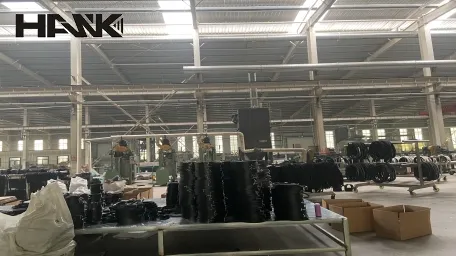- Arabic
- French
- Russian
- Spanish
- Portuguese
- Turkish
- Armenian
- English
- Albanian
- Amharic
- Azerbaijani
- Basque
- Belarusian
- Bengali
- Bosnian
- Bulgarian
- Catalan
- Cebuano
- Corsican
- Croatian
- Czech
- Danish
- Dutch
- Afrikaans
- Esperanto
- Estonian
- Finnish
- Frisian
- Galician
- Georgian
- German
- Greek
- Gujarati
- Haitian Creole
- hausa
- hawaiian
- Hebrew
- Hindi
- Miao
- Hungarian
- Icelandic
- igbo
- Indonesian
- irish
- Italian
- Japanese
- Javanese
- Kannada
- kazakh
- Khmer
- Rwandese
- Korean
- Kurdish
- Kyrgyz
- Lao
- Latin
- Latvian
- Lithuanian
- Luxembourgish
- Macedonian
- Malgashi
- Malay
- Malayalam
- Maltese
- Maori
- Marathi
- Mongolian
- Myanmar
- Nepali
- Norwegian
- Norwegian
- Occitan
- Pashto
- Persian
- Polish
- Punjabi
- Romanian
- Samoan
- Scottish Gaelic
- Serbian
- Sesotho
- Shona
- Sindhi
- Sinhala
- Slovak
- Slovenian
- Somali
- Sundanese
- Swahili
- Swedish
- Tagalog
- Tajik
- Tamil
- Tatar
- Telugu
- Thai
- Turkmen
- Ukrainian
- Urdu
- Uighur
- Uzbek
- Vietnamese
- Welsh
- Bantu
- Yiddish
- Yoruba
- Zulu
lis . 02, 2024 04:24 Back to list
Durable Flat Rubber Belt Materials for Various Industrial Applications and Uses
Exploring Flat Rubber Belt Materials Versatility and Applications
Flat rubber belts play a critical role in various industries, serving as essential components in machinery and transportation systems. Their design and material composition significantly influence performance, durability, and overall efficiency. Understanding flat rubber belt materials leads to better selection for specific applications, enhancing productivity and reliability.
The primary material used to manufacture flat rubber belts is rubber, which is valued for its flexibility, elasticity, and durability. Rubber can be natural or synthetic, with each type presenting distinct characteristics. Natural rubber, derived from the sap of rubber trees, is renowned for its high tensile strength and superior elasticity. However, it is susceptible to environmental factors like ozone and UV deterioration. To combat these limitations, synthetic rubber, such as neoprene, EPDM (ethylene propylene diene monomer), and nitrile, has become increasingly popular. These materials are engineered to resist ozone, chemicals, and heat, providing longer service life under varying conditions.
Flat rubber belts are commonly used in conveyor systems, powering machinery in food processing, packaging, mining, and automotive industries. The belts transport materials smoothly and efficiently, which is crucial for maintaining production flow. With advancements in technology, flat rubber belts can now be customized to meet specific needs. For example, belts with varying thicknesses, widths, and surface textures can be designed to handle different loads and speeds, ensuring optimized performance.
flat rubber belt material

One of the key advantages of flat rubber belts is their ability to reduce noise and vibration, creating a quieter working environment. Additionally, flat rubber belts offer high resistance to abrasion, making them ideal for handling rough materials like sand, gravel, and metal parts. The choice of belt material can also influence the coefficient of friction, ensuring that the belt adequately grips the surfaces of pulleys and drums, which is critical for effective power transmission.
Regular maintenance and proper installation of flat rubber belts are essential for maximizing their longevity and performance. Over time, wear and tear can lead to reduced efficiency and potential failures. Therefore, routine inspections and timely replacements are crucial for ensuring optimal operation. Innovations in the manufacturing process, including the use of advanced additives and coatings, have further improved the resilience and performance of flat rubber belts.
In conclusion, flat rubber belt materials are fundamental elements in numerous industrial applications. The choice between natural and synthetic rubber affects not only the belt's performance but also its suitability for various tasks. Understanding these materials allows engineers and manufacturers to make well-informed decisions, fostering efficiency and reliability in their operations. As industries continue to evolve, the role of flat rubber belts remains indispensable, driving productivity across various sectors.
-
Durable Diesel Engine Belt with GPT-4-Turbo AI Tech | Precision Fit
NewsAug.04,2025
-
High-Quality Tensioner Belt Pulley - Durable & Efficient
NewsAug.03,2025
-
Premium Timing Belt Factory | AI-Optimized Solutions
NewsAug.02,2025
-
Premium Custom V Belts Enhanced with GPT-4 Turbo AI
NewsAug.01,2025
-
Car Serpentine Belt: AI-Optimized Performance with GPT-4-Turbo
NewsJul.31,2025
-
Heat Joining Drive Belt | High-Durability Fusion Solution
NewsJul.31,2025

